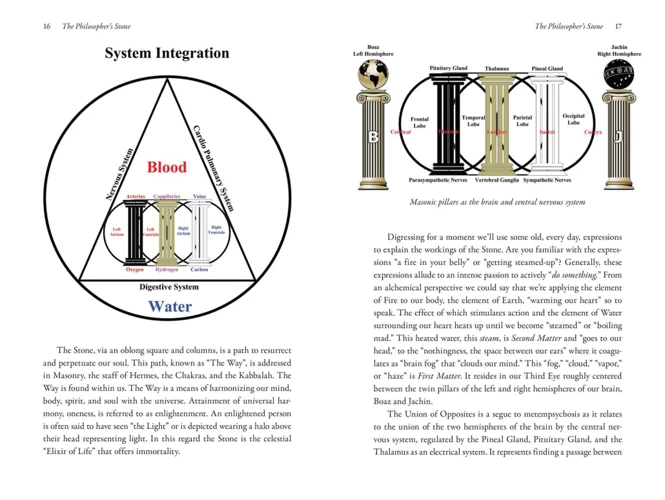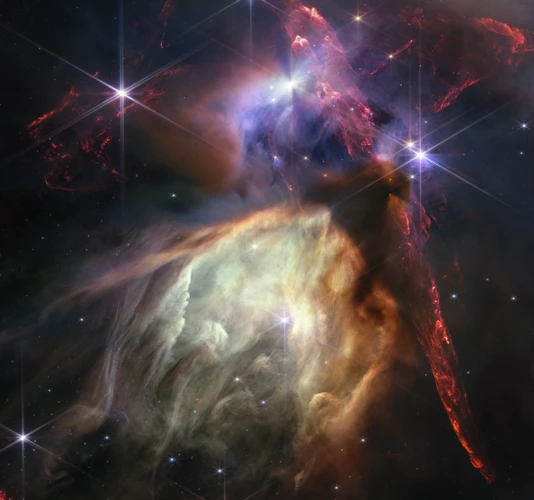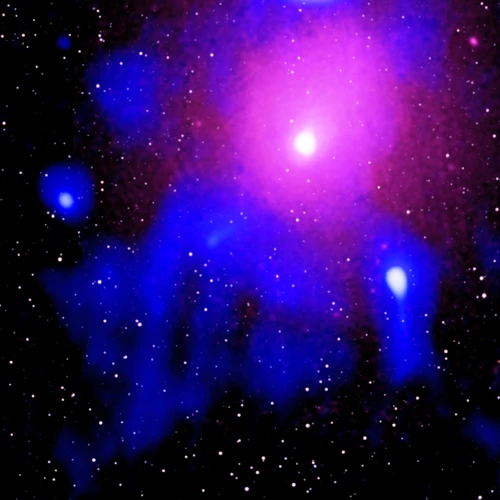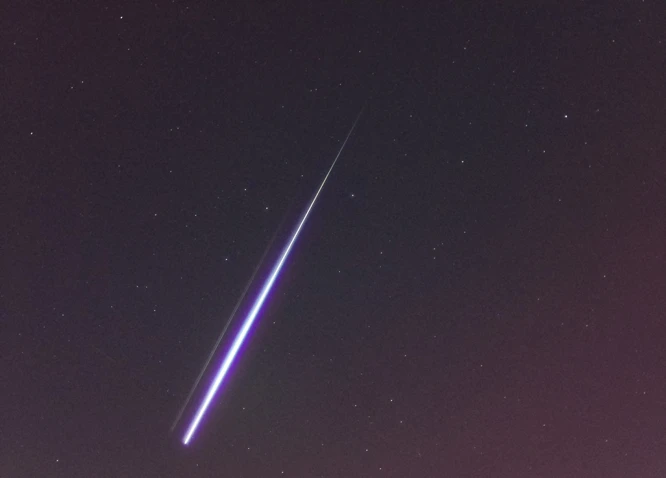The marvel of meteor showers has captivated humans since ancient times, igniting our imagination and fascination with the mysteries of the universe. Recent breakthroughs and discoveries in meteor shower research have shed new light on these celestial phenomena, uncovering their origins, properties, and potential implications. In this article, we will delve into the fundamental aspects of meteor showers, explore traditional study methods, and delve into the recent technological advancements that have revolutionized our understanding of these breathtaking events. Join us on this journey as we unravel the secrets of meteor showers and explore the exciting possibilities they hold for the future of space exploration.
Contents
- Meteor Shower Basics
- Traditional Study Methods
- Recent Technological Advancements
- Breakthrough Discoveries
- Implications and Future Research
- Conclusion
-
Frequently Asked Questions
- 1. What causes a meteor shower?
- 2. How often do meteor showers occur?
- 3. Can meteor showers be predicted?
- 4. What is the best time to view a meteor shower?
- 5. Do all meteor showers have names?
- 6. How fast do meteors travel?
- 7. Do meteor showers pose a threat to Earth?
- 8. How do scientists study meteor showers?
- 9. Can meteor showers be heard?
- 10. Are all shooting stars meteor showers?
- References
-
Frequently Asked Questions
- FAQ 1: What is the latest breakthrough discovery in meteor shower research?
- FAQ 2: How do scientists study meteor showers?
- FAQ 3: What are the parent bodies of meteor showers?
- FAQ 4: Can meteor showers pose a threat to Earth?
- FAQ 5: How do recent technological advancements aid meteor shower research?
- FAQ 6: Are there any unexplored meteor showers yet to be discovered?
- FAQ 7: Can meteor showers help in space weather forecasting?
- FAQ 8: What are the limitations of traditional study methods for meteor showers?
- FAQ 9: Can meteor shower research contribute to planetary defense strategies?
- FAQ 10: How frequently do meteor showers occur?
- References
- Read More
Meteor Shower Basics

Meteor showers are awe-inspiring celestial events that occur when the Earth passes through streams of debris left behind by comets or asteroids. These captivating displays of fireworks in the sky are caused by tiny particles, called meteoroids, entering the Earth’s atmosphere at high speeds. As they travel through the atmosphere, friction heats up the meteoroids, causing them to vaporize and create bright streaks of light known as meteors. Meteor showers can produce dozens or even hundreds of meteors per hour, providing spectacular nighttime shows for stargazers and astronomy enthusiasts alike. The frequency and occurrence of meteor showers vary depending on several factors, such as the parent comet or asteroid and its orbital dynamics. Throughout history, meteor showers have held cultural significance and have been associated with various /sacred-rituals-inca-culture/and beliefs. Understanding the basics of meteor showers is crucial for further exploration and research into these celestial marvels.
1.1 Meteor Shower Definition
Meteor showers are captivating celestial events that occur when the Earth passes through streams of debris left behind by comets or asteroids. In the Meteor Shower Definition section, we will explore the intricacies of these dazzling displays in the night sky. A meteor shower is characterized by a significant increase in the number of meteors visible over a short period of time. While sporadic meteors can be observed at any time, meteor showers are unique in their predictability and intensity. They occur when Earth’s orbit intersects with the orbit of a comet or asteroid, causing debris to enter our planet’s atmosphere. This debris, called meteoroids, range in size from tiny grains of dust to larger rocks, and they burn up upon entry, creating the luminous streaks we observe as meteors. Meteor showers are often named after the constellation from which they appear to radiate, such as the famous Perseids, which appear to originate from the constellation Perseus. Understanding the definition and characteristics of meteor showers plays a vital role in unraveling the mysteries of celestial objects and their interactions with our planet and its surroundings, such as /uncovering-mystery-planetary-alignments/.
1.2 Meteoroids and Meteors
Meteoroids are small rocky or metallic objects that orbit the sun. They range in size from tiny dust particles to larger objects several meters in diameter. When a meteoroid enters the Earth’s atmosphere, it becomes a meteor. The friction between the meteoroid and the atmosphere causes it to heat up and create a glowing trail of light as it streaks across the sky. These streaks of light are commonly known as shooting stars. Meteors can be observed during meteor showers or as sporadic meteors that occur randomly throughout the year. While most meteoroids completely burn up in the atmosphere, larger ones may survive the journey and land on the Earth’s surface as meteorites. Studying meteoroids and meteors provides valuable insights into the composition and properties of these objects, as well as their potential impact on our planet and beyond. Understanding the characteristics of meteoroids and the mechanics of meteor entry and combustion is essential for comprehending the dynamics of meteor showers and their /personality-traits-zodiac/ relationship to other astronomical phenomena.
1.3 Frequency and Occurrence
The frequency and occurrence of meteor showers are influenced by several key factors. One of the primary determinants is the parent comet or asteroid responsible for the meteor shower. When comets orbit the Sun, they leave behind debris trails known as meteoroid streams. These streams intersect the Earth’s orbit, resulting in meteor showers when our planet passes through them. The number and intensity of meteors during a shower can vary widely, with some showers producing only a few meteors per hour while others unleash a flurry of activity with hundreds of meteors streaking across the sky. Additionally, the Earth’s position in its orbit plays a role in the frequency and occurrence of meteor showers. Certain showers may occur annually at the same time, such as the Perseids in August or the Geminids in December. Others have less predictable patterns or irregular cycles. Factors like the angle at which Earth intersects the debris stream, the density of particles within the stream, and gravitational influences from other celestial bodies contribute to the variability in the frequency and intensity of meteor showers. These unique characteristics make each meteor shower a special event that invites awe and wonder as enthusiasts eagerly anticipate their arrival.
Traditional Study Methods

Scientists have been studying meteor showers for centuries using a variety of traditional methods. Observation techniques are a fundamental aspect of meteor shower research, with astronomers relying on visual observations to track and document the paths and characteristics of meteors. In addition to the naked eye observations, telescopes and cameras are also used to enhance the data collection process. Data collected from these observations is carefully analyzed to determine the radiant, trajectory, and intensity of the meteors. Scientists have developed sophisticated systems for meteor shower prediction, utilizing mathematical models and historical data to forecast the timing and intensity of future meteor showers. However, traditional study methods have their limitations and challenges. Weather conditions, light pollution, and the limitations of human observation can limit the accuracy and reliability of the data collected. Despite these challenges, traditional study methods have laid the foundation for our understanding of meteor showers and paved the way for the advancements that followed.
2.1 Observation Techniques
Observation techniques play a crucial role in studying meteor showers, allowing scientists to gather valuable data and insights into these celestial events. One of the traditional methods involves visual observations, where astronomers rely on their eyes to detect and count meteors during specific meteor shower peaks or over extended periods of time. This technique helps determine the meteor shower’s radiant point, where the meteors appear to originate from in the sky. Another technique is the use of radio wave reflections caused by ionized trails left by meteors. Radio antennas can detect these reflections and provide information on various properties of the meteors, such as their velocity and direction. More advanced observation techniques involve the use of cameras, both ground-based and space-based, to capture images and videos of meteor showers. These cameras can be equipped with sensitive sensors to detect even faint meteors and precisely measure their brightness. Additionally, radar systems are employed to track the paths of meteoroids through the Earth’s atmosphere, allowing scientists to determine their trajectories and estimate their sizes. Combining these observation techniques enables researchers to gather comprehensive data on meteor shower characteristics, such as meteor flux, speed, and composition. The advancements in observation technologies have greatly enhanced our understanding of meteor showers and opened up new possibilities for further research and discoveries in this field.
2.2 Data Collection and Analysis
Data collection and analysis play a crucial role in meteor shower research, providing valuable insights into the dynamics and characteristics of these celestial phenomena. Scientists employ various methods to collect data, including visual observations, photography, radar systems, and satellite instruments. Visual observations involve astronomers manually recording the number, brightness, and trajectory of meteors during a meteor shower event. This method has been widely used for centuries and continues to provide valuable data. Photography has also been a valuable tool, allowing astronomers to capture images of meteors for further analysis and documentation. In recent years, radar systems have revolutionized data collection by emitting radio waves that bounce off meteor trails, providing information on their velocity, direction, and composition. Satellite instruments, such as the Global Positioning System (GPS) and weather satellites, have also contributed to data collection by detecting and monitoring meteor showers from space.
2.3 Limitations and Challenges
Exploring and studying meteor showers present scientists with a range of limitations and challenges that can hinder research progress. Here are some key factors that researchers face:
- Weather conditions: One of the primary challenges in observing meteor showers is the unpredictable nature of weather conditions. Cloud cover, light pollution, and atmospheric conditions can greatly impact visibility and hinder accurate data collection during meteor shower events.
- Geographical constraints: Researchers may face limitations based on their location. Some meteor showers are more visible in specific areas of the world, making it challenging for scientists in other regions to observe and gather data.
- Interference: Man-made sources of light, such as streetlights and buildings, can interfere with observations and affect the overall accuracy of data collection. Efforts are being made to minimize light pollution in order to optimize meteor shower research.
- Advanced technology requirements: The study of meteor showers demands sophisticated observation equipment that can capture high-speed events and record precise data. The cost and availability of such technology can be a limitation for many researchers.
- Short-lived events: Meteor showers typically last for a few hours or days, limiting the window of opportunity for data collection. Researchers must carefully plan their observations and make the most of the limited time available.
- Data analysis: Analyzing vast amounts of data collected during meteor shower events can be a complex task. Researchers need to employ advanced analysis techniques and algorithms to extract meaningful insights from the data and draw accurate conclusions.
Despite these limitations and challenges, scientists continue to overcome obstacles through innovative techniques and collaborations, pushing the boundaries of meteor shower research and uncovering remarkable discoveries.
Recent Technological Advancements

Recent technological advancements have revolutionized the study of meteor showers, allowing scientists to gain unprecedented insights into these cosmic phenomena. Advanced observation technologies, such as radar systems and high-resolution cameras, have enhanced our ability to detect and track meteoroids as they enter the Earth’s atmosphere. These advancements have not only increased the accuracy of meteor shower predictions, but have also enabled researchers to study the composition and properties of the meteoroids in greater detail. Additionally, high-speed imaging and spectroscopy, which capture rapid changes in light intensity and spectrum, have provided valuable information about the physical properties of meteoroids. These breakthroughs have opened new avenues of research and expanded our understanding of meteor showers, contributing to the advancement of space science and exploration.
3.1 Advanced Observation Technologies
Advanced observation technologies have revolutionized the study of meteor showers, allowing scientists to gather more accurate and detailed data than ever before. Here are some of the groundbreaking technologies that have been employed in the quest to better understand meteor showers:
1. Radio Detection Systems: Radio detection systems have proven to be indispensable tools for studying meteor showers. These systems utilize antennas to detect and measure the radio waves emitted by meteors as they pass through the atmosphere. By analyzing the frequency and duration of these radio signals, scientists can determine important characteristics of meteors, such as their velocity and trajectory. This information provides valuable insights into the behavior and properties of meteor showers.
2. Radar Systems: Radar systems have been instrumental in advancing our understanding of meteor showers. These powerful systems emit radio waves into the sky and then measure the strength and frequency of the waves that bounce back after interacting with meteors. By analyzing the radar echoes, scientists can accurately determine the height, speed, and direction of meteoroids as they enter the Earth’s atmosphere. This data helps in mapping the distribution and density of meteoroids and provides crucial information for studying the underlying dynamics of meteor showers.
3. All-Sky Cameras: All-sky cameras are wide-angle cameras that capture images of the entire night sky at regular intervals. These cameras are strategically positioned to maximize coverage and enable the simultaneous observation of multiple meteor showers. By recording the brightness, duration, and trajectories of individual meteors, all-sky cameras provide comprehensive data for studying meteor shower patterns, variations, and activity levels over time. The high-resolution images captured by these cameras also allow for the identification and tracking of meteoroids that produce particularly bright or unusual meteor events.
4. Satellite-based Instruments: Satellites equipped with specialized instruments have played a crucial role in expanding our knowledge of meteor showers. These instruments, such as optical sensors and spectrometers, can observe meteors from space and capture valuable data about their composition, structure, and chemical properties. Satellite observations provide a global perspective on meteor showers, enabling scientists to study their distribution across different regions of the Earth and investigate potential links between meteor showers and other celestial events.
These advanced observation technologies have opened up new avenues for research, offering unprecedented insights into the complex nature of meteor showers. By combining data from various observation techniques, scientists can paint a more comprehensive picture of these celestial phenomena, helping to unravel their mysteries and further our understanding of the universe.
3.2 High-Speed Imaging and Spectroscopy
High-speed imaging and spectroscopy have revolutionized the study of meteor showers, allowing scientists to capture detailed information about the physical characteristics and composition of meteors. High-speed cameras equipped with advanced sensors and lenses have enabled researchers to capture the rapid movement of meteors across the sky with remarkable precision and clarity. These cameras can record thousands of frames per second, allowing for the analysis of meteor trajectories, fragmentation patterns, and luminosity variations. This wealth of data helps scientists determine the size, speed, and entry angle of meteoroids, providing valuable insight into their origins.
Spectroscopy plays a crucial role in understanding the chemical composition of meteors. Spectrographs, which analyze the light emitted by meteors, can identify the presence of specific elements and compounds. By studying the unique spectroscopic signatures of different materials, scientists can gain insight into the origin of meteoroids and the processes that occur during their fiery journey through the atmosphere.
The combination of high-speed imaging and spectroscopy has paved the way for groundbreaking discoveries in meteor shower research. For example, these techniques have allowed scientists to identify the presence of rare elements in meteors that originated from distant regions of the solar system. Additionally, they have provided evidence of water and organic compounds in meteors, raising intriguing questions about the role of these celestial objects in the origins of life on Earth and beyond.
High-speed imaging and spectroscopy have significantly enhanced our understanding of meteor showers. The ability to capture and analyze detailed data about meteoroid characteristics and composition has opened up new avenues of research and exploration in the field of astronomy. With further advancements in technology, scientists will undoubtedly continue to uncover fascinating insights about these celestial phenomena and their significance in the broader context of our universe.
Breakthrough Discoveries

Breakthrough discoveries in meteor shower research have revolutionized our understanding of these celestial phenomena. Scientists have made significant progress in unraveling the origins of meteor showers, discovering that they are linked to comets and asteroids. Through advanced techniques such as spectroscopy, researchers have been able to analyze the composition and properties of meteoroids, revealing valuable insights into their chemical makeup. These breakthroughs have also shed light on the intricate dynamics between meteor showers and their parent bodies, uncovering complex orbital interactions and trajectories. The newfound knowledge about meteor showers has far-reaching implications, ranging from space weather forecasting to planetary defense strategies. As scientists continue to push the boundaries of knowledge, we can expect even more remarkable discoveries in the future that will deepen our understanding of these mesmerizing celestial displays.
4.1 Meteor Shower Origins
Meteor showers have long been observed and admired, but their origins have remained a subject of curiosity and scientific inquiry. Recent breakthroughs in meteor shower research have provided valuable insights into their origins. It is now widely accepted that most meteor showers originate from the debris left behind by comets as they journey through the solar system. When a comet approaches the Sun, its icy nucleus heats up, causing it to release gas and dust into space. This debris forms a trail that follows the comet’s orbit. When the Earth intersects with these trails, the gravitational pull of our planet causes the comet’s debris to enter the atmosphere, resulting in a meteor shower. Each meteor shower is associated with a specific comet, often referred to as the “parent body.” The most famous example of this is the Perseids meteor shower, which originates from the debris left by the comet Swift-Tuttle. By studying the orbits of meteoroids and their association with parent bodies, scientists can trace the origins of meteor showers and gain a deeper understanding of how they form and evolve over time. This knowledge contributes to our broader understanding of the dynamics of our solar system and the processes that shape it.
4.2 Parent Bodies and Orbital Dynamics
When it comes to meteor showers, an essential aspect of research involves studying the parent bodies and their orbital dynamics. The parent bodies refer to comets or asteroids that shed debris as they orbit the Sun. These remnants form the material that creates meteor showers when intersecting with Earth’s orbit. One of the key breakthroughs in recent years has been the identification of specific comets or asteroids associated with particular meteor showers.
Orbital dynamics play a crucial role in determining when and where meteor showers occur. Scientists have developed sophisticated models and simulations to analyze the orbital paths of parent bodies and predict the timing and intensity of meteor showers. By understanding the orbital dynamics, researchers can accurately forecast future meteor shower events and provide valuable information to astronomers and the general public.
The study of parent bodies and orbital dynamics has also led to the discovery of new meteor showers that were previously unknown. For example, the Quadrantid meteor shower, which occurs in early January, was only discovered in the 19th century after its parent body, asteroid 2003 EH1, was identified. This newfound knowledge has expanded our understanding of the diversity and complexity of meteor showers in our solar system.
To conduct research on parent bodies and orbital dynamics, scientists utilize a combination of ground-based observations, space missions, and advanced data analysis techniques. By observing the trajectory of meteoroids entering Earth’s atmosphere and analyzing their chemical composition, scientists can trace them back to their origin and determine the parent body responsible.
In recent years, advancements in space exploration technologies have allowed scientists to study asteroids up close, providing valuable insights into their physical properties and composition. Missions like NASA’s OSIRIS-REx and Japan’s Hayabusa2 have successfully collected samples from asteroids and brought them back to Earth for detailed analysis. These missions have provided unprecedented information about the parent bodies associated with meteor showers and expanded our knowledge of their orbital dynamics.
The study of parent bodies and orbital dynamics is an integral part of meteor shower research. Through advanced modeling, observations, and space missions, scientists have made significant strides in understanding the relationship between comets, asteroids, and meteor showers. This knowledge not only enhances our appreciation of these cosmic events but also helps us better predict and prepare for future meteor showers.
4.3 Composition and Properties
The composition and properties of meteor showers provide valuable insights into the nature of these celestial events. By analyzing the materials that make up the meteoroids, scientists can determine their origins and study the physical and chemical processes that occur during their entry into the Earth’s atmosphere.
1. Chemical Composition:
– The chemical composition of meteoroids can vary widely depending on their parent bodies. They are primarily composed of rocky materials such as silicates, iron, and nickel. However, they can also contain trace elements and rare minerals.
– Spectroscopic analysis of meteoroids allows scientists to identify the presence of specific elements and compounds. This analysis provides clues about the composition and evolution of the parent bodies from which meteoroids originated.
2. Physical Properties:
– Meteoroids come in a range of sizes, from tiny grains to larger objects several meters in diameter. Their size and density influence their behavior as they enter the Earth’s atmosphere.
– The entry speed of meteoroids can reach tens of kilometers per second, causing intense heat and friction. This heat vaporizes the outer layers of the meteoroid, creating the glowing tail seen during a meteor shower.
– Some meteoroids are more solid and compact, while others may be loosely bound aggregates. These differences in structure affect the fragmentation and ablation processes as meteoroids pass through the atmosphere.
3. Meteorite Samples:
– Some meteoroids survive their journey through the atmosphere and land on the Earth’s surface as meteorites. These meteorite samples provide direct evidence of the composition and properties of meteoroids.
– Scientists analyze meteorites to study their mineralogy, isotopic composition, and organic compounds. This analysis helps unravel the mysteries of the early Solar System and the processes that led to the formation of planets and other celestial bodies.
Understanding the composition and properties of meteor showers is crucial for gaining insights into their origins, evolution, and interactions with the Earth’s atmosphere. It allows scientists to piece together the puzzle of our cosmic neighborhood and deepen our understanding of the processes that shape our universe.
Implications and Future Research

The recent breakthroughs in meteor shower research have significant implications for various fields of study and foster exciting avenues for future research. One of the key implications lies in space weather forecasting. By understanding the behavior and characteristics of meteor showers, scientists can gather valuable data to improve predictions of space weather events that may impact Earth’s atmosphere, satellites, and even power grids. Additionally, the study of meteor showers contributes to the development of planetary defense strategies. By comprehending the dynamics and properties of meteoroids, researchers can better assess potential risks and devise strategies to safeguard against potential impacts. The exploration of unexplored meteor showers holds promise for uncovering new insights into the composition and properties of these celestial bodies, enhancing our understanding of the broader universe. The continuous advancements and discoveries in meteor shower research pave the way for groundbreaking breakthroughs and open doors to the exploration of extraterrestrial phenomena.
5.1 Space Weather Forecasting
Space weather forecasting plays a crucial role in understanding and predicting the impact of meteor showers on Earth’s environment and technological systems. Space weather refers to the conditions and events occurring in the space surrounding our planet, including the effects of solar activities, solar wind, and cosmic rays. By studying meteor showers and their behavior, scientists can gather valuable information about the composition, density, and velocity of meteoroids, which can aid in space weather forecasting. Understanding the parameters of meteor showers can help predict potential hazards, such as the risk of meteoroids colliding with satellites or spacecraft. Additionally, the data collected from meteor showers can contribute to the development of models and algorithms used in space weather forecasting, allowing researchers to anticipate the intensity and duration of meteor showers with greater accuracy. This knowledge is vital for space agencies and technology-dependent industries, enabling them to take necessary precautions and safeguard their assets during meteor shower events. With advancements in observation technologies and data analysis techniques, space weather forecasting is poised to become even more effective in the future.
5.2 Planetary Defense Strategies
When it comes to planetary defense, understanding meteor showers and their properties is of utmost importance. Recent breakthroughs in meteor shower research have paved the way for developing effective strategies to protect our planet from potential impacts. One approach involves the use of advanced observation technologies and data analysis to detect and track near-Earth objects (NEOs) that could pose a threat. By identifying and monitoring these objects, scientists can calculate their trajectories and assess the risk they pose to Earth. Advancements in space technology have opened up the possibility of deflecting or diverting hazardous asteroids or comets. Concepts such as kinetic impactors, gravity tractors, and ion beam shepherds are being explored as potential mitigation techniques. These strategies aim to alter the course of NEOs, ensuring they do not collide with our planet. Collaborations between space agencies and international organizations are crucial in pooling resources and expertise to enhance our defensive capabilities. Planetary defense strategies not only help safeguard Earth from potential catastrophic events but also provide valuable insights into the dynamics and behavior of cosmic objects. Continual research and innovation in this field are essential to improve our preparedness and protect our planet from potential impacts from meteor showers and other celestial bodies.
5.3 Unexplored Meteor Showers
Unexplored meteor showers present a thrilling frontier for future research and discovery in the field of astronomy. While many well-known meteor showers have been extensively studied, there is still a vast number of undiscovered or poorly understood showers waiting to be explored. With technological advancements and innovative research techniques, astronomers have the opportunity to unveil the secrets of these mysterious meteor showers. By identifying and studying these unexplored showers, scientists can gain insights into the parent bodies, orbital dynamics, and composition of the meteoroids, contributing to a deeper understanding of the solar system’s history and evolution. Studying unexplored meteor showers can provide valuable data for space weather forecasting, planetary defense strategies, and even uncovering potential connections to other cosmic phenomena. The search for unexplored meteor showers holds the promise of unlocking new knowledge and unraveling the captivating mysteries of the universe.
Conclusion

In conclusion, the recent discoveries and breakthroughs in meteor shower research have propelled our understanding of these captivating celestial events to new heights. Through traditional observation techniques and advancements in technological tools, scientists have been able to uncover the origins, dynamics, and properties of meteor showers. The study of meteor showers not only provides insights into the composition and behavior of comets and asteroids, but also opens avenues for space weather forecasting and strategies for planetary defense. The unexplored potential of meteor showers continues to intrigue scientists and astronomers, and future research in this field holds great promise. By further investigating the mysteries of meteor showers, we can unlock a wealth of knowledge about our universe and continue to marvel at the wonders of the cosmos. Whether it’s witnessing a meteor shower firsthand or delving into their scientific intricacies, these cosmic displays serve as constant reminders of the vastness and beauty of the cosmos.
Frequently Asked Questions

1. What causes a meteor shower?
Meteor showers are caused by the Earth passing through streams of debris left behind by comets or asteroids. As these cosmic objects orbit the sun, they shed particles along their path, creating a trail of debris. When the Earth’s orbit intersects with these debris trails, the particles enter the atmosphere and produce meteor showers.
2. How often do meteor showers occur?
Meteor showers occur regularly throughout the year, but the frequency and intensity of each shower can vary. Some meteor showers are annual, happening around the same time each year, while others are sporadic or occur at irregular intervals. Major meteor showers can provide a spectacular display, with peak activity that may last for several nights.
3. Can meteor showers be predicted?
Yes, scientists can predict meteor showers based on past observations and data. By studying the orbital dynamics of comets and asteroids, as well as the debris trails they leave behind, researchers can forecast when and where meteor showers are likely to occur. However, the exact intensity of a meteor shower is challenging to predict accurately.
4. What is the best time to view a meteor shower?
The best time to view a meteor shower is typically during the pre-dawn hours when the sky is at its darkest. This allows for optimal visibility of the meteors against a dark background. It is advisable to find a location away from city lights and other sources of light pollution to enhance the viewing experience.
5. Do all meteor showers have names?
No, not all meteor showers have names. Some are named after the constellations from which they appear to radiate. For example, the Perseid meteor shower appears to originate from the constellation Perseus. Other showers may be named after the first person or observatory to document their activity.
6. How fast do meteors travel?
Meteors can travel at incredibly high speeds as they enter the Earth’s atmosphere. On average, they move at speeds of around 30 kilometers per second (67,000 miles per hour). However, the exact velocity can vary depending on factors such as the size and composition of the meteoroid.
7. Do meteor showers pose a threat to Earth?
Generally, meteor showers pose no direct threat to Earth. Most meteoroids burn up completely in the atmosphere, creating the mesmerizing streaks of light we see as meteors. However, larger meteoroids known as “fireballs” can survive the atmospheric entry and reach the Earth’s surface, although these events are rare.
8. How do scientists study meteor showers?
Scientists study meteor showers through various techniques, including visual observation, radar systems, and specialized cameras. These methods allow researchers to collect data on meteor shower activity, such as the number of meteors, their velocities, and trajectories. Advanced technologies and data analysis have greatly improved our understanding of meteor showers in recent years.
9. Can meteor showers be heard?
No, meteor showers cannot be heard because the sound waves produced by the meteors are typically too faint to be detected by the human ear. The bright flashes of light produced by meteors are caused by the intense heat generated during their atmospheric entry, but this process does not create significant sound.
10. Are all shooting stars meteor showers?
No, shooting stars and meteor showers are different phenomena. Shooting stars refer to the brief streaks of light produced when a meteoroid enters the Earth’s atmosphere and vaporizes. Meteor showers, on the other hand, occur when the Earth passes through debris trails left by comets or asteroids, resulting in a higher concentration of meteors over a specific period of time.
References
Frequently Asked Questions

FAQ 1: What is the latest breakthrough discovery in meteor shower research?
The latest breakthrough discovery in meteor shower research is the identification of a previously unknown meteor shower known as the Alpha Monocerotids. This shower was first observed in 2019 and was found to produce a short but intense increase in meteor activity.
FAQ 2: How do scientists study meteor showers?
Scientists study meteor showers through various methods such as visual observation, radar detection, and high-speed imaging. These techniques allow researchers to track and analyze the trajectory, speed, and composition of meteors within a shower.
FAQ 3: What are the parent bodies of meteor showers?
The parent bodies of meteor showers are usually comets or asteroids. When a comet or asteroid crosses the Earth’s orbit, it sheds debris in the form of dust and small rocks. These debris particles then enter the Earth’s atmosphere, causing meteor showers when they burn up.
FAQ 4: Can meteor showers pose a threat to Earth?
Meteor showers themselves do not pose a threat to Earth as the debris particles burn up in the atmosphere. However, larger meteoroids or asteroids that are not completely vaporized can potentially reach the Earth’s surface and cause damage.
FAQ 5: How do recent technological advancements aid meteor shower research?
Recent technological advancements, such as advanced observation technologies and high-speed imaging, have greatly aided meteor shower research. These technologies provide more accurate and detailed data on the characteristics and behavior of meteors, allowing scientists to gain deeper insights into meteor showers.
FAQ 6: Are there any unexplored meteor showers yet to be discovered?
Yes, there are still unexplored meteor showers yet to be discovered. With the advancement of technology and the continuous improvement of observation techniques, scientists are constantly discovering new meteor showers or identifying previously unknown ones.
FAQ 7: Can meteor showers help in space weather forecasting?
Yes, meteor showers can provide valuable information for space weather forecasting. Studying meteor showers helps scientists understand the composition and dynamics of the Earth’s atmosphere, which in turn contributes to predicting and monitoring space weather phenomena.
FAQ 8: What are the limitations of traditional study methods for meteor showers?
Traditional study methods for meteor showers, such as visual observation, have limitations due to human error and the inability to capture accurate data on the speed and composition of meteors. Additionally, observing meteor showers in unfavorable weather conditions can also hinder data collection.
FAQ 9: Can meteor shower research contribute to planetary defense strategies?
Yes, meteor shower research can contribute to planetary defense strategies. By studying the origins, dynamics, and composition of meteor showers, scientists can gain valuable insights into the behavior and characteristics of near-Earth objects, which is crucial for developing effective defense strategies against potential asteroid impacts.
FAQ 10: How frequently do meteor showers occur?
Meteor showers occur regularly throughout the year, but their frequency varies depending on the specific shower. Some meteor showers have a higher occurrence rate, while others are more sporadic. The most well-known and active meteor shower, the Perseids, occurs annually in August.
References
- Meteor showers and shooting stars: Formation and history
- [2308.02664] AI-Enhanced Data Processing and Discovery …
- Parker Solar Probe Makes a Surprising Discovery About …







